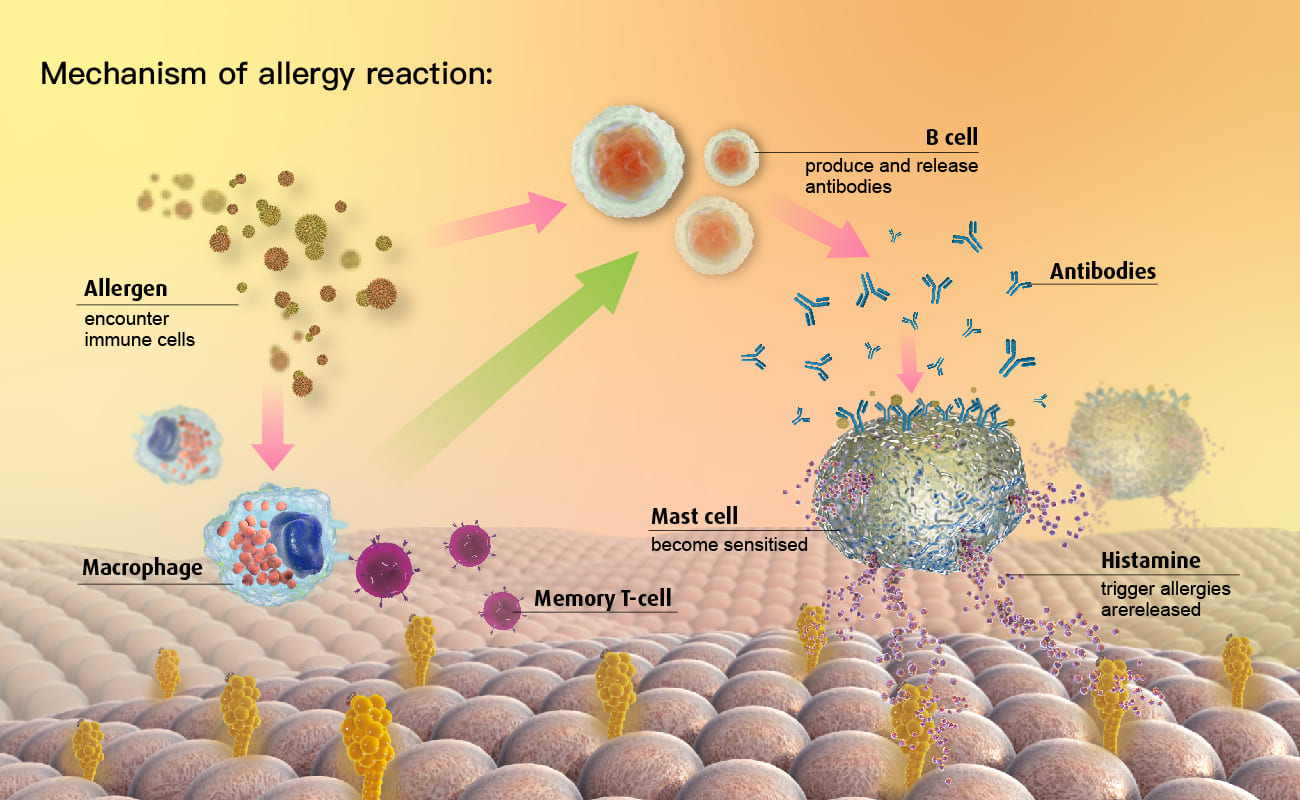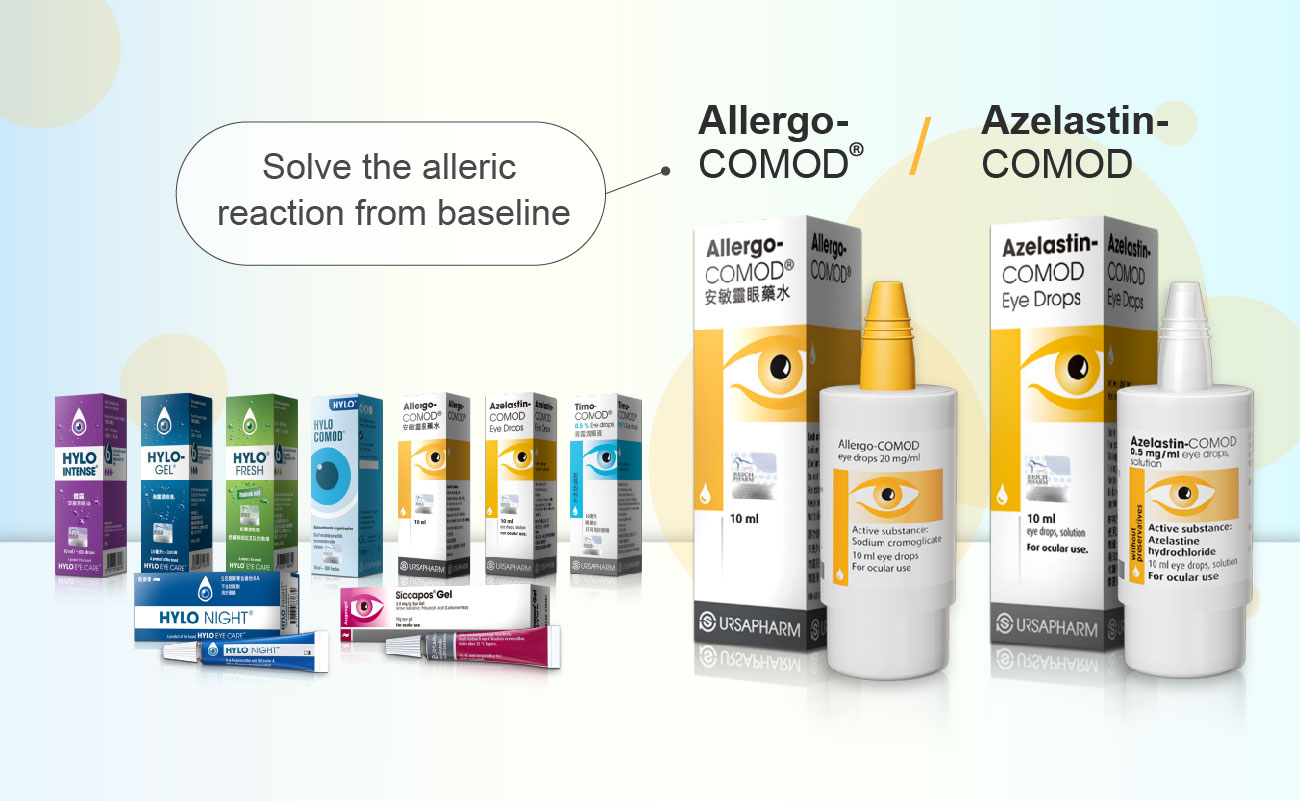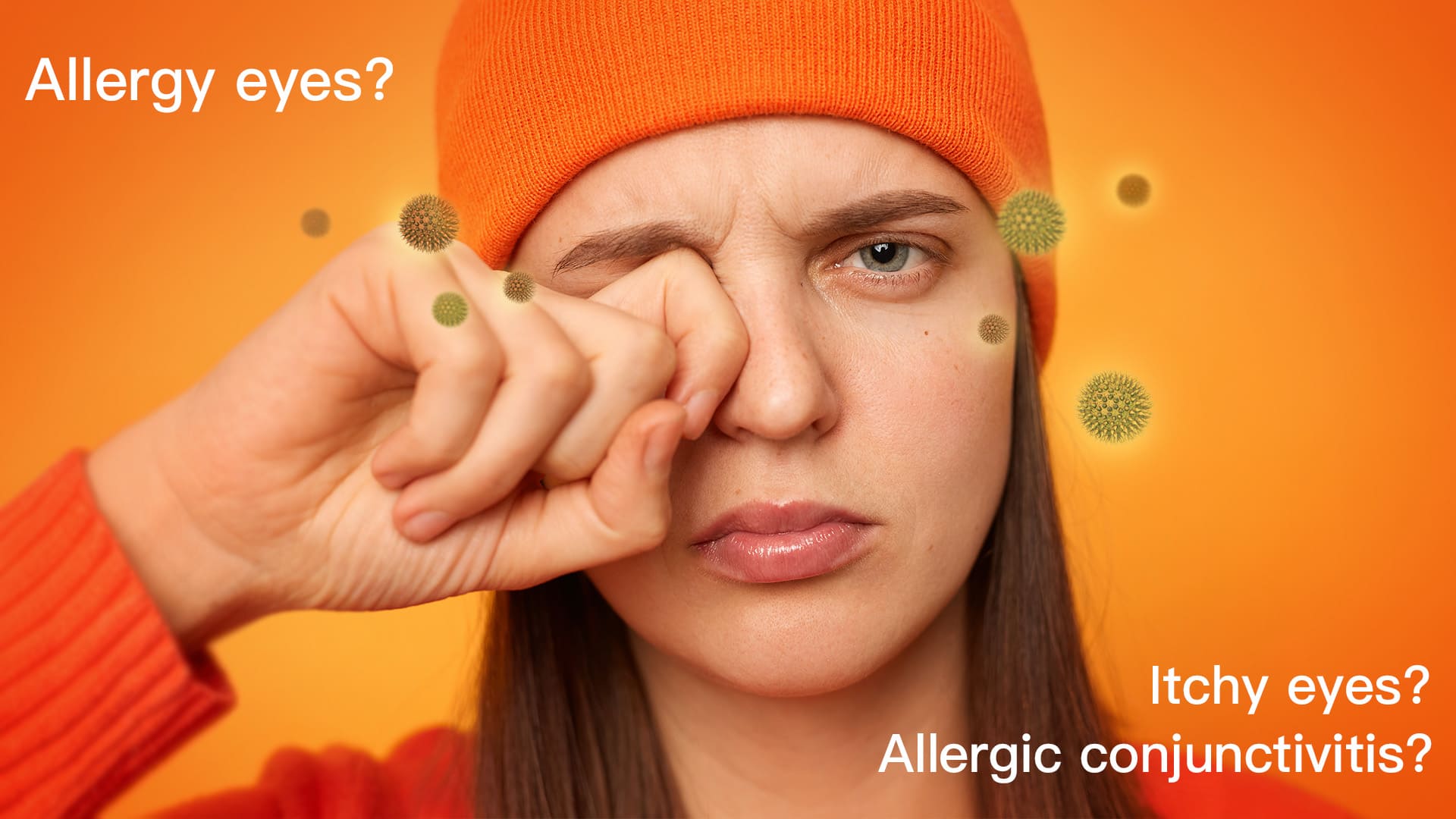Why do allergic reactions occur?
When cells come into contact with foreign or potentially harmful substances, they trigger defense mechanisms to protect themselves. These foreign substances include allergens or bacteria. Allergens are mainly tiny proteins that generally do not pose a threat to the body.
However, people with sensitive constitutions have particular antibodies in their bodies, causing the release of various tissue hormones from the skin and mucous membranes. The essential hormone in allergic reactions is histamine: it can trigger many allergic reactions, such as itching, swelling, rapid breathing, or vasodilation. Many mast cells in the eyelids and conjunctiva contain histamine and substances that cause inflammation.

Immunoglobulin E (IgE) is present on the surface of mast cells. When the eyes are exposed to allergens from the external environment, several IgE molecules bind together, stimulating mast cells to release histamine and mediators, thereby causing allergic reactions such as itching and congestion of the eyes.
Mast cell stabilizers inhibit mast cells from degranulation, suppressing histamine release. The immune system is activated when the body is first exposed to an allergen. Subsequently, each time the allergen is reencountered, this process repeats. In other words, when cells are allergic to a substance, they develop a memory for it. That’s why when the body is repeatedly exposed to this substance, an allergic reaction occurs quickly, usually within a few minutes, but sometimes it may take up to an hour.
Causes and Symptoms of Eye Allergies
Seasonal allergy symptoms are mostly related to pollen. Still, many other factors can also stimulate the conjunctiva of our eyes, such as animal fur, dust mites, fungal spores, insect toxins, or certain food ingredients. Patients should identify their actual allergens.
Eye allergy reactions can be very severe; the conjunctiva and mucous membranes immediately react to foreign substances, causing vasodilation and fluid release, which are common symptoms of allergies, forming “allergic conjunctivitis.”

Common Symptoms of Allergies
Watery eyes, runny nose, and swollen eyes are common symptoms of allergies. However, when the allergic reaction in the eyes is severe, it may cause blurred vision and photophobia.
Allergic conjunctivitis is mainly divided into two types: acute and chronic.
Acute allergic conjunctivitis: It is usually caused by patients’ contact with pollen or pets, and a large amount of allergens suddenly enters the eyes, causing acute allergic reactions. The conjunctiva and eyelids may also swell.
Generally, the symptoms will resolve independently after several hours, and medications can alleviate discomfort and shorten the duration of symptoms.
Chronic allergic conjunctivitis: Chronic irritation caused by dust mites, mold, or contact lenses, leading to symptoms such as itching, foreign body sensation, and conjunctival congestion. The conjunctiva may also exhibit papillary elevation and other inflammatory reactions in severe cases. The treatment focus is mainly on identifying allergens and avoiding them.
Recommended Preservative-Free Eye Drops For Eye Allergy : Azelastine-Comod and Allergo-Comod:
- Preservative-free and patented bottle design: Using the COMOD®-System patented technology, the eye drops are kept in a sterile state and sealed environment without the need for preservatives, maintaining the quality of the eye drops.
- Drop-by-drop dosage Design: The COMOD® dosage system makes dispensing precisely one drop per pump stroke possible. This means the contents go a long way. The drop dispensed is the same size, producing a constant, reliable effect.
For more detailed information, please refer to the Allergo-COMOD® or Azelastin-COMOD®.



